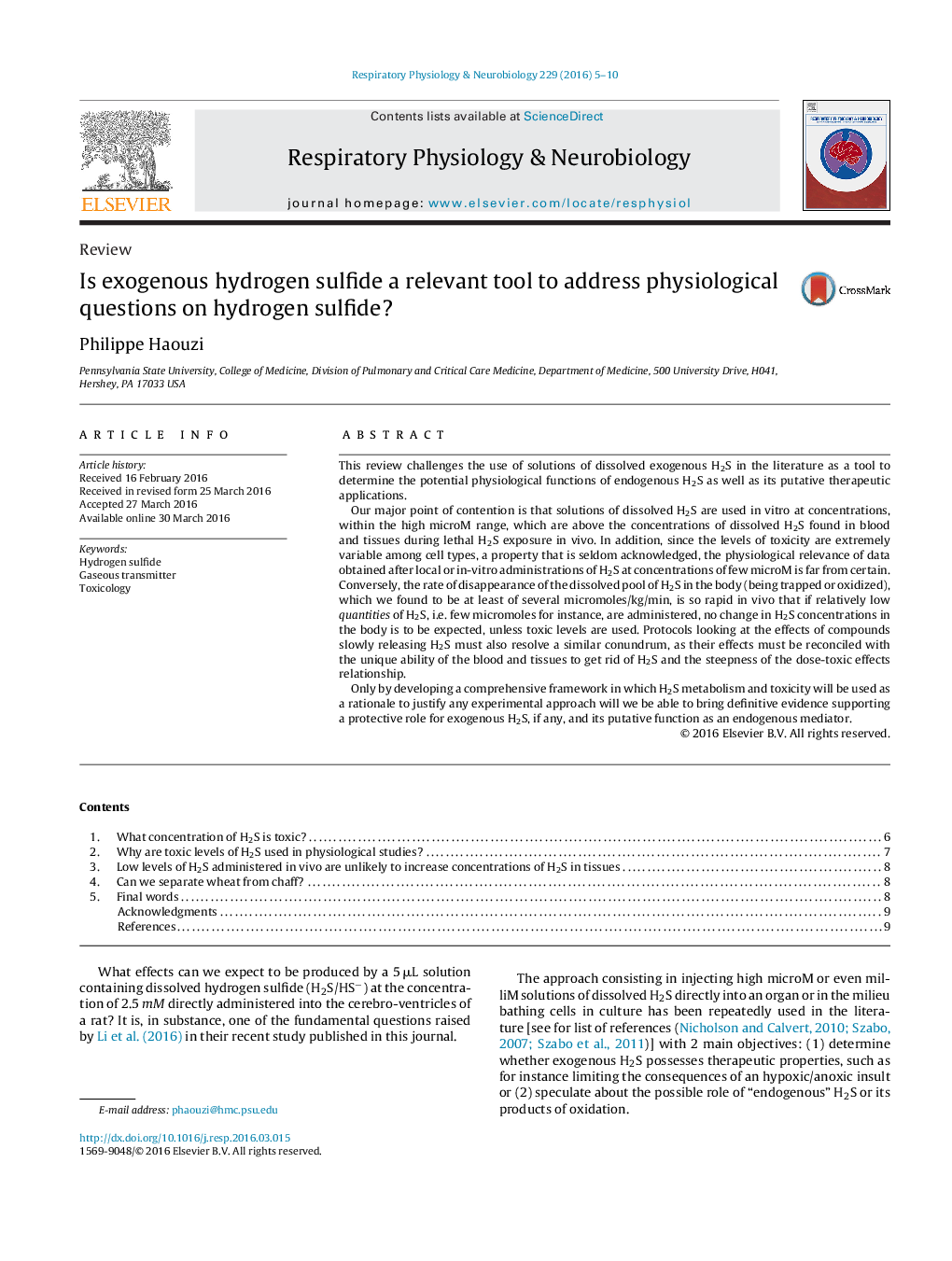| کد مقاله | کد نشریه | سال انتشار | مقاله انگلیسی | نسخه تمام متن |
|---|---|---|---|---|
| 2846673 | 1571301 | 2016 | 6 صفحه PDF | دانلود رایگان |
• H2S is toxic in vivo at concentrations of dissolved sulfide routinely used in vitro (microM range).
• The reactivity of exogenous H2S with a multitude of critical biological processes is so pervasive at the dose typically used for local administration or in vitro that the data obtained from these studies should, in our view, belong to the field of toxicology.
• The oxidation of dissolved H2S and its rate of disappearance are so rapid and potent in vivo that low quantities (few micromoles) of H2S administered, even for few days, are unlikely to result in any changes in H2S concentrations in tissues.
This review challenges the use of solutions of dissolved exogenous H2S in the literature as a tool to determine the potential physiological functions of endogenous H2S as well as its putative therapeutic applications.Our major point of contention is that solutions of dissolved H2S are used in vitro at concentrations, within the high microM range, which are above the concentrations of dissolved H2S found in blood and tissues during lethal H2S exposure in vivo. In addition, since the levels of toxicity are extremely variable among cell types, a property that is seldom acknowledged, the physiological relevance of data obtained after local or in-vitro administrations of H2S at concentrations of few microM is far from certain. Conversely, the rate of disappearance of the dissolved pool of H2S in the body (being trapped or oxidized), which we found to be at least of several micromoles/kg/min, is so rapid in vivo that if relatively low quantities of H2S, i.e. few micromoles for instance, are administered, no change in H2S concentrations in the body is to be expected, unless toxic levels are used. Protocols looking at the effects of compounds slowly releasing H2S must also resolve a similar conundrum, as their effects must be reconciled with the unique ability of the blood and tissues to get rid of H2S and the steepness of the dose-toxic effects relationship.Only by developing a comprehensive framework in which H2S metabolism and toxicity will be used as a rationale to justify any experimental approach will we be able to bring definitive evidence supporting a protective role for exogenous H2S, if any, and its putative function as an endogenous mediator.
Journal: Respiratory Physiology & Neurobiology - Volume 229, 15 July 2016, Pages 5–10
